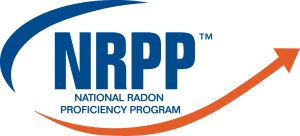
Efficient Vapor Barrier Solutions
Cardinalbama’s vapor barrier services are crafted to provide complete moisture control and protection for your commercial properties. Our experience and expertise ensure that your building remains safeguarded against harmful environmental elements.
Our vapor barriers provide unmatched protection with benefits such as:
- Adherence to ASTM 1745 and 1643 standards
- Reduces risk of mold growth
- Prevents volatile organic compound (VOC) intrusion
- Protects against radon and methane gases
- Optimal moisture control for structural integrity
- Comprehensive and seamless installation service
Advanced Vapor Barrier Installations
Cardinalbama’s vapor barrier solutions are the key to maintaining a clean and dry infrastructure. By investing in our expertly applied barriers, your commercial property benefits from optimal moisture protection and extended longevity.
Our specialized vapor barriers ensure reliable protection, offering benefits such as:
- Detailed assessment and site evaluation
- Customized barrier design specific to your property
- Use of high-durability, quality material
- Efficient and clean installation process
- Comprehensive coverage for maximum protection
- Reduction in energy costs
- Long-term moisture and mold prevention
- Improved air quality for a healthier environment

Our Process
Explore our comprehensive process designed to ensure high-quality vapor barrier installations with guaranteed results.
Consultation
We begin by understanding your needs to tailor our vapor barrier solutions specifically for your project.
Design & Planning
Our experts design a custom solution that integrates seamlessly with your building plans.
Installation
Professional installation of vapor barriers using state-of-the-art techniques and materials.
Final Assessment
Post-installation inspection to ensure compliance with industry standards and client satisfaction.
Who We Serve
Our comprehensive commercial radon services are tailored to meet the unique needs of diverse industries, ensuring safety and compliance in every environment.
Property managers
We help properties including Apartment complexes, Medical facilities, Warehouse, Municipal buildings and more.
General contractors
Enhance property value and safety from the ground up on new construction properties for future occupants.
Multifamily
housing
Incorporate radon-resistant features in multi-family housing for future-proof health and safety of occupants.
Your Top Questions About Vapor Barriers
Here are some of our most frequently asked questions about vapor barriers, but feel free to reach out if you have any other questions.
Our 100% Success Rate
At Cardinal Bama, we pride ourselves on delivering unmatched radon remediation services that ensure the safety and health of our clients’ environments.
Mitigation Success
We ensure all radon levels are reduced below 4.0 pCi/L, safeguarding your building’s indoor air quality and health.
Radon Levels
Our guarantee ensures radon levels below 4.0 pCi/L in every service, providing peace of mind and safety assurance.
years of expertise
With over 30 years of professional experience, Cardinalbama is trusted for our expert radon mitigation services across the region.
Our Certifications
Cardinalbama is proudly certified by the industry’s leading organizations, reflecting our commitment to quality, safety, and professionalism. Our credentials ensure that we meet the highest standards for radon mitigation and testing services.





Resources About Radon Mitigation
Explore our collection of expert guides, articles, and resources designed to provide insightful information on radon mitigation and safety for commercial properties.
"*" indicates required fields
Transform Your Space with Expert Radon Mitigation
At Cardinal Bama, we’re dedicated to creating safer environments with our specialized radon mitigation services. Let our certified professionals guide you through improving your property’s air quality.



